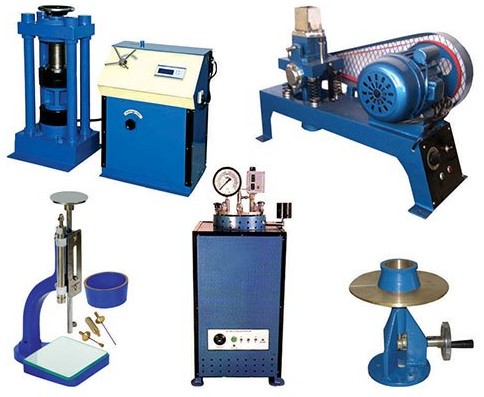Mastering Immersive Audio with Engine: The Next Generation of Upmix and Downmix Technologies

Immersive audio is changing how we experience sound. It makes movies, games and broadcasts feel more real by creating a rich, 3D-like sound environment. However, working with immersive audio isn’t always easy. Mixing different formats, adapting sound for various platforms and ensuring high-quality playback can be challenging.
That’s where Emotion Systems’ Engine comes in. This powerful tool automates upmixing and downmixing, making it easier to create and adapt immersive audio without losing quality. Let’s explore how upmix and downmix technologies are shaping the future of sound.
What is Immersive Audio?
Imagine watching a movie where the sound moves around you, making you feel like you’re right in the middle of the action. That’s immersive audio. Unlike traditional stereo sound, which comes from only two directions, immersive audio creates a three-dimensional sound experience. This is used in films, video games, music and even live sports broadcasts to enhance the audience’s experience.
Immersive audio isn’t just about making things sound better—it’s about making them feel real. Whether it’s the sound of footsteps behind you in a game or the roar of a stadium crowd, immersive audio pulls you in.
The Challenges of Immersive Audio
Immersive audio is amazing but it comes with challenges. Like,
- Balancing traditional and immersive formats can be tricky.
- Ensuring clear, high-quality sound for live events is a challenge.
- Making sure immersive sound works across different platforms.
- Updating older audio formats to match modern standards.
- Converting immersive sound without losing clarity is difficult.
How Engine Solves These Challenges
Emotion Systems’ Engine is built to handle these challenges. It automates upmixing and downmixing, ensuring smooth, high-quality results every time. This makes it easier for professionals to create, edit and distribute immersive audio across different platforms.
Upmixing: Creating Immersive Audio
Upmixing is the process of taking a simple stereo or traditional audio file and converting it into a rich, immersive sound experience. Here’s how Engine helps:
- Turn stereo into 3D sound: It creates a surround sound effect from simple stereo tracks.
- Keep audio clean and natural: An adaptive algorithm ensures sound remains smooth and free of distortions.
- Support for up to 16 channels: It can create highly detailed, multidimensional audio.
- Enhance old recordings: Even older audio files can be given new depth and clarity.
With Engine, even the most basic audio files can be transformed into a captivating, immersive experience.
Downmixing: Making Immersive Audio Compatible
Not all platforms support immersive audio. That’s where downmix comes in. Engine makes immersive sound accessible on any device by:
- Converting immersive audio into stereo or 5.1 formats
- Ensuring smooth playback across different platforms
- Maintaining rich sound quality even in simpler formats
- Providing consistent audio experiences across devices
This ensures that no matter where the content is played—whether on a high-end home theater system or a simple pair of headphones—the sound remains immersive and enjoyable.
The Future of Immersive Audio
As immersive audio becomes more common, professionals need the right tools to keep up. Engine offers:
- Automated, software-based solutions: Reducing manual work and saving time.
- Scalability across industries: From music and movies to gaming and broadcasting.
- Consistent, high-quality results: Ensuring immersive audio sounds great everywhere.
- Future-proof technology: Staying ahead of industry trends and evolving needs.
Why Emotion Systems’ Engine Stands Out
Emotion Systems’ Engine has a range of smart features. It is designed to simplify immersive audio processing. Its automated workflow reduces manual adjustments. This saves your time and effort. The adaptive algorithm makes sure the highest quality sound while eliminating any unwanted artefacts. It supports multiple formats, from simple stereo to complex 16-channel immersive audio. This makes it highly versatile.
The Impact of Immersive Audio on Different Industries
Immersive audio is making waves in several industries:
Film & TV
Sound plays a huge role in storytelling. Immersive audio makes scenes feel more realistic and engaging. With Engine, sound designers can easily create and modify immersive soundscapes without spending hours on manual work.
Gaming
Gaming is all about creating experiences and immersive audio adds to that by making players feel like they’re truly inside the game. Upmixing stereo sound to surround sound enhances the player’s experience, making in-game environments feel real and alive.
Live Sports & Broadcasting
For sports fans, immersive audio can make them feel like they’re right in the stadium. Engine helps broadcasters ensure clear commentary while keeping the excitement of the crowd in the background.
Music & Streaming
Artists and music producers are experimenting with immersive audio to create deeper, richer sound experiences. Whether it’s a concert recording or a studio album, Engine ensures the final mix sounds perfect across all platforms.
Bottom Line
Immersive audio is the future of sound but making it work across different formats and platforms can be tough. That’s why upmixing and downmixing technologies are so important. With tools like Emotion Systems’ Engine, professionals can create, adapt and enhance immersive sound with ease.
Whether you’re crafting 3D audio experiences, ensuring seamless playback, or revitalizing old recordings, mastering immersive audio is key to staying ahead. Engine makes it simple, powerful and effortless—helping you deliver the best possible sound experience every time.
With the rise of immersive content, having the right tools isn’t just a luxury—it’s a necessity. And with Engine, creating and managing immersive audio has never been easier.









